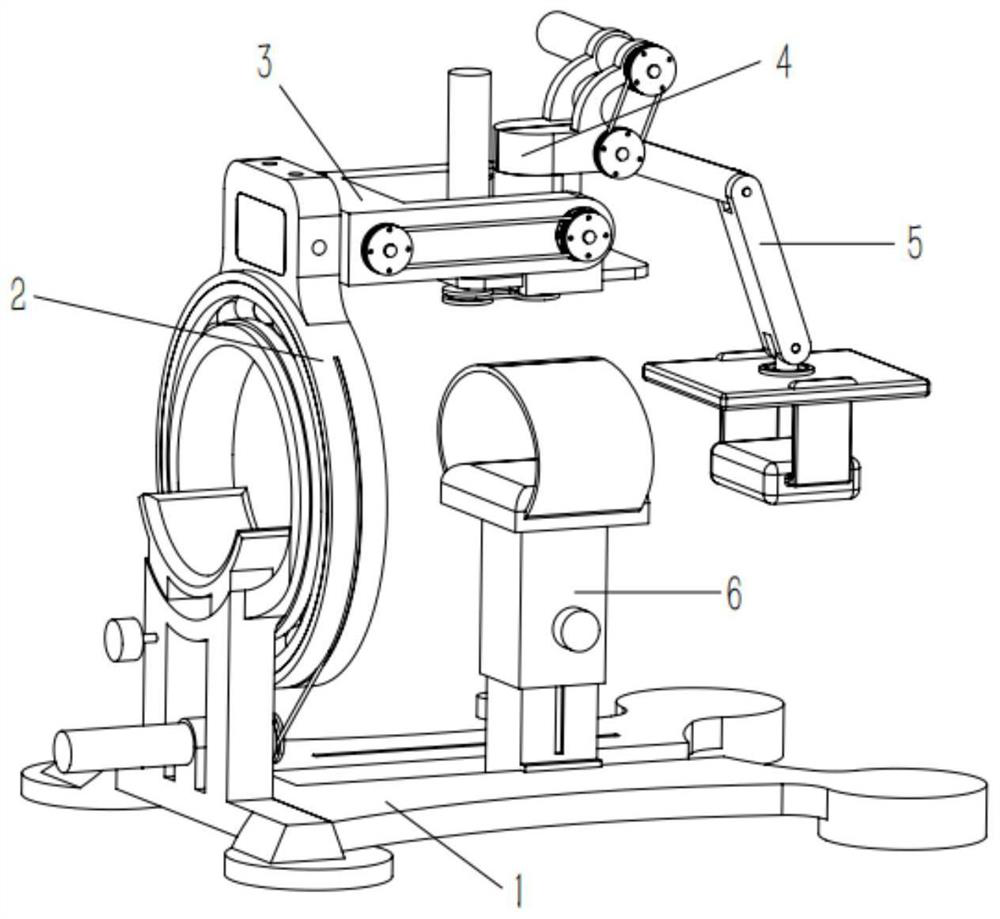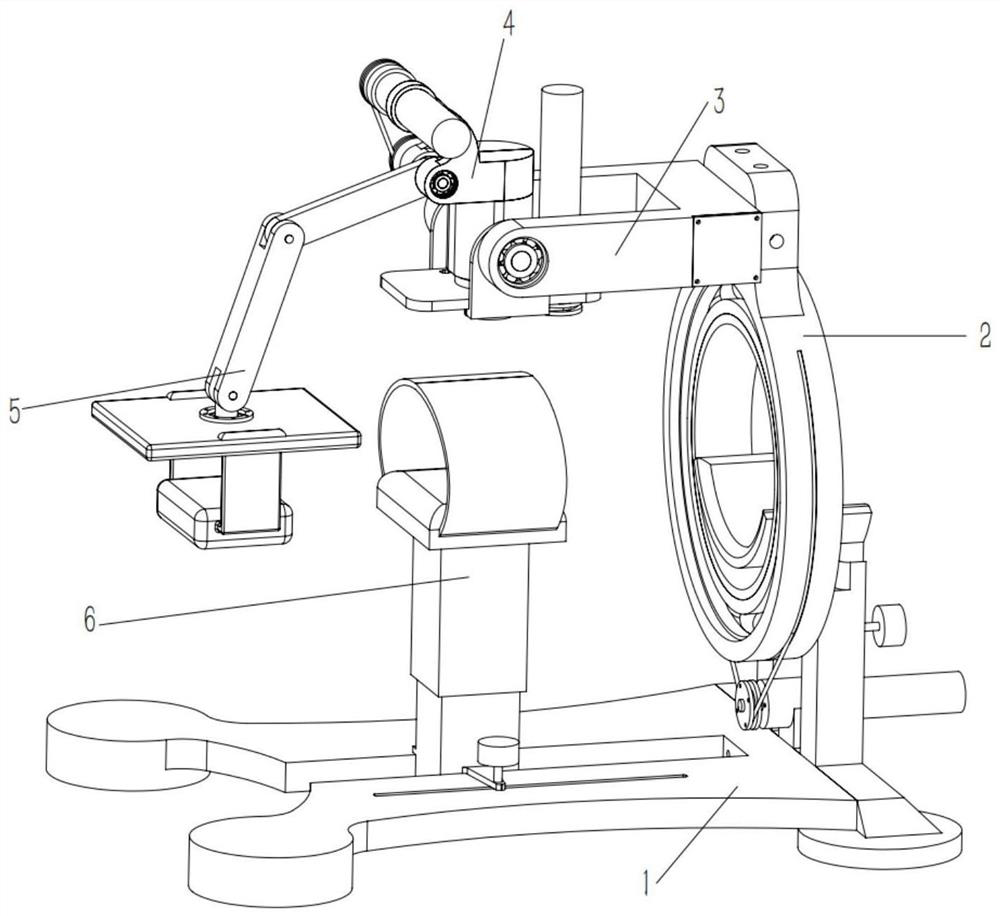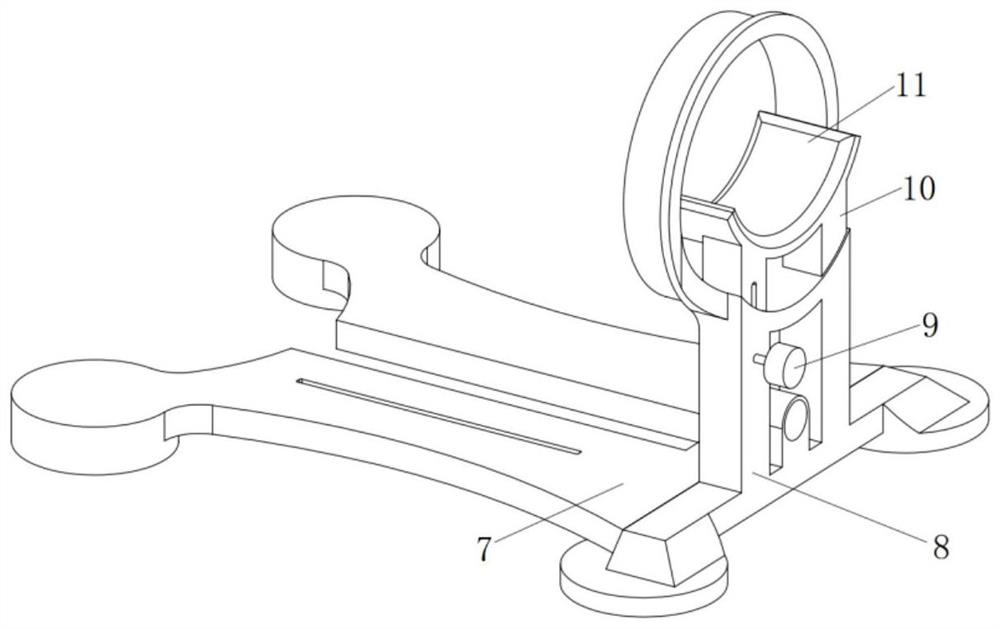A Wrist Joint Rehabilitation Device Adaptive to Changes of Human Movement Axis
A human body movement and self-adaptive technology, applied in passive exercise equipment, physical therapy and other directions, can solve the problems such as the inability to solve the problem of non-coincidence of the rotation axes, the inability to achieve radial deviation motion, and the inability of the axes to keep coincident at all times, so as to avoid gap errors, The effect of improving comfort and improving safety
- Summary
- Abstract
- Description
- Claims
- Application Information
AI Technical Summary
Problems solved by technology
Method used
Image
Examples
Embodiment Construction
[0038] This embodiment is a wrist joint rehabilitation device that adapts to changes in the human body's motion axis.
[0039] refer to Figure 1 to Figure 8 In this embodiment, the wrist joint rehabilitation device adapting to changes in the human body motion axis is composed of a base 1, a wrist circling mechanism 2, an ulnar-radial deviation axis following mechanism 3, a wrist flexion and extension and ulnar-radial deviation mechanism 4, a terminal passive mechanism 5 and a wrist The fixing mechanism 6 is composed of; wherein, the base 1 is connected with the wrist fixing mechanism 6 and is fixedly connected with the wrist circling mechanism 2. The base 1 is used to support various mechanism components, and the base structure also includes an elbow height adjustment mechanism. During installation, the centerlines of the wrist fixing mechanism and the wrist circling mechanism and the axial chute axis of the bottom plate of the base are located in the same vertical plane.
...
PUM
 Login to View More
Login to View More Abstract
Description
Claims
Application Information
 Login to View More
Login to View More - R&D
- Intellectual Property
- Life Sciences
- Materials
- Tech Scout
- Unparalleled Data Quality
- Higher Quality Content
- 60% Fewer Hallucinations
Browse by: Latest US Patents, China's latest patents, Technical Efficacy Thesaurus, Application Domain, Technology Topic, Popular Technical Reports.
© 2025 PatSnap. All rights reserved.Legal|Privacy policy|Modern Slavery Act Transparency Statement|Sitemap|About US| Contact US: help@patsnap.com



